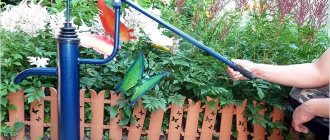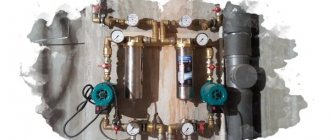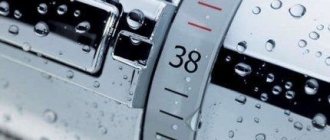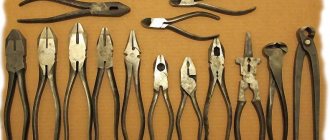Suburban areas, in most cases, do not have a central sewerage system. Therefore, owners of dachas, country houses, and cottages are forced to construct a local drain for waste and excrement. The best way to clean such pits is a fecal pump for pumping out sewerage.
The range of these devices is very wide, which creates certain difficulties when choosing. The buyer has doubts about making the final decision. We have selected 10 of the best, most popular pumps based on owner reviews to make the choice simple and easy.
Fecal pump - what is it, purpose, device
A fecal pump or also a mud pump is intended for pumping out viscous heavy fibrous masses, including those with insoluble inclusions up to 50 mm in diameter. Installations of this type are widely used in everyday life. They can be used not only for forced cleaning of cesspools, but also in a number of situations with similar tasks:
- Pumping groundwater from structures located below ground level - basements, ground floors.
- Elimination of the consequences of natural disasters - floods, floods, rainstorms.
- Cyclic pumping of underground storage tanks - drainage, stormwater systems, as well as the last chambers of the septic tank.
- Replacement of water in artificial reservoirs on the site - pools, ponds, periodically filled low landforms.
- Filling containers from the nearest natural reservoir for irrigating beds, fields, gardens, plantations.
The design of a fecal pump for pumping out a cesspool includes the following main elements:
- Electric drive.
- A pump is a mechanism driven by an engine and directly performing the pumping procedure.
Diagram of a submersible fecal pump Source strojdvor.ru
- An intake hole for the passage of liquid into the pump.
- Outlet valve – ensures the drainage of wastewater into the container.
- Mechanical crusher of large particles.
Unlike drainage analogues, which can only pump out contaminated water, pumps of this type are capable of pumping thicker sludge containing solid particles. However, to prevent mechanical inclusions from clogging the system, the installation is equipped with a special grinder in the form of rotating sharp knives.
On a note! Due to the increased impact of destructive factors, the pump housing must have high mechanical and chemical resistance. Therefore, most often it is made of stainless steel, cast iron or steel with a protective coating. Inexpensive models are made of plastic and do not last long with intensive use.
Rules for using equipment
Every technically complex mechanism can quickly break down if used incorrectly. For example, the operation of a submersible pump after pumping liquid from a container. This type of pump uses pumped wastewater for cooling. If the drains run out and the pump continues to work, the engine will quickly burn out from overheating.
The same thing will happen if you use the equipment for other purposes. For example, it is dangerous to pump out drainage water with it. The reason is that there are a lot of hard stones in the pumped liquid. In the shredder, these particles will damage the knives, and the pump will no longer be able to work normally.
Before putting the fecal pump into operation, you must familiarize yourself with the operating rules. Violation of them may result in early termination of the equipment warranty.
Varieties
Depending on the installation location and operating conditions, pumps of the type in question come in 3 main varieties:
- Submersible.
- Semi-submersible.
- Superficial.
Let's look at the features of their design and functionality in more detail.
Operation diagram of a submersible pump for pumping out a septic tank Source strojdvor.ru
Submersible
Based on the name itself, submersible pumps are installed in a pit by being completely immersed in the sludge - to the bottom. Its housing is durable, sealed and chemically resistant. A characteristic feature of the device is a powerful pump and, as a result, high performance.
Due to the difficulty of maintenance, in order to avoid clogging the system with large particles, almost all models of submersible sewage pump are equipped with a grinder. Without it, the system will simply clog. However, even despite this auxiliary mechanism, the rules for a constantly operated device indicate the need to periodically, once every 3-4 months, remove it and clean it from clogging with mechanical particles.
To ensure uninterrupted operation, the submersible fecal pump must be cleaned every 3-4 months Source aqua-rmnt.com
Neglecting this procedure very quickly leads to wear of the rotating blades and, as a result, increased load on the motor, increased energy consumption and a decrease in the service life of all equipment as a whole. Therefore, some responsible manufacturers specially equip their products with a special lift on a steel cable - for better removal from the pit and timely carrying out preventive or repair work.
Modern pumps of this type operate automatically. The controller is a float mechanism with a liquid level sensor. As soon as the volume of the underground tank reaches the upper level, the pump turns on and begins pumping. When the lower level is reached, the drive turns off and pumping stops.
Advantages of submersible models:
- Productivity up to 400 m³ per hour.
- Stationary installation.
- Compactness.
- Full protection.
- Drive power up to 40 kW.
- No noise during pumping.
- Work year-round.
- Automatic control of the cesspool fullness level.
- Ability to process solid inclusions in wastewater.
Special cutting blades are installed in front of the intake holes in the submersible pump to crush waste. Source allegroimg.com
Disadvantages are associated with the need to periodically lift the equipment for preventative cleaning. In addition, it is important to control the temperature of the waste mass, since if it is above 400C, the pump will begin to overheat and deteriorate.
See also: Catalog of companies that specialize in water supply, sewerage and related work
Semi-submersible
Models of semi-submersible type mud pumping equipment are distinguished by large vertical linear dimensions - due to the specifics of the device and operating principle. Functionally, the design of such a pump is divided into two parts - the upper one with the motor, which is not submersible, and the lower one - the pump chamber, which during operation is always located in the waste mass, for direct intake and pumping of sewage.
In terms of power, devices of this type are inferior to the analogues given above. However, they benefit from better access to the main working part - the engine. Therefore, their installation is advantageous when it is necessary to pump frequently or almost continuously - for example, in combined septic tanks, where wastewater from several objects flows at once.
Design of a semi-submersible fecal pump Source montagtrub.ru
The unit is usually installed afloat. For this purpose, a special float platform is used. However, most of the models produced today do not provide for the installation of a cutting and grinding mechanism. These factors significantly limit its use. In everyday life, such pumps are installed primarily in specially designed septic tanks.
Advantages of semi-submersible units:
- Accessibility of the engine for maintenance and repair – without the need to lift the unit outwards.
- Stationary installation.
- Possibility of modernization - by installing a more powerful drive.
- 10 times lower cost compared to submersible analogues.
- Possibility of pumping hot waste liquids - since the engine is air cooled.
The main disadvantages are related to the specifics of their design - complexity of installation, lack of a chopper, insufficient motor protection and noisy operation.
The use of a fecal pump reduces the cost of servicing a cesspool and eliminates the need to call a sewer truck Source strojdvor.ru
Superficial
An external pump for pumping out sewerage in a private house operates on the principle of a self-priming pumping station - similar to a vacuum truck. The device is simply installed next to the cesspool, and wastewater is collected through a hose. In the domestic version, the unit is equipped with a plastic housing, has small dimensions and weight and poor performance. Therefore, its main purpose is seasonal cleaning of the cesspool in dachas.
The surface model is not intended for stationary installation and is intended for mobile use. However, if necessary, it can be fixed in a specific place. In this case, the equipment must be protected from precipitation and cold. Otherwise, the electrical equipment will be damaged by dampness, and the pump will break down at sub-zero temperatures when the pumped mass begins to freeze.
Advantages of ground models:
- Mobility in operation.
- Minimum cost.
- Versatility in use.
The main quality of a surface pump is mobility Source kaercher-media.com
Disadvantages:
- The limitation on the throughput of solid inclusions is no more than 5 mm.
- Noisy work.
- Limited productivity, as well as the length of the included hose - no more than 7 meters.
Note! The presence of a special complete or separately purchased shredder in the pump eliminates the need to constantly monitor the penetration of large particles into the sewer system. The mechanism crushes all solid, fibrous and abrasive fragments that get into the drains to a homogeneous mass, and prevents the pumping system from clogging.
Gilex
The products are presented in two series:
- Fekalnik pumps can be used for water that contains contaminants no larger than 3.5 cm in size. Most often these are submersible pumps for domestic use powered by an electrical network.
- Drainage pumps are designed for pumping out contaminated wastewater.
The technical characteristics of both models include:
- The presence of a float for automatic operation.
- Possibility of collecting liquid from a depth of 6-11 meters.
- Capacity up to 225 liters per minute.
Criterias of choice
In order to choose the right fecal pump for a cesspool, you must take into account the following series of criteria:
- Rated operating voltage and motor power.
Installations used in everyday life are usually equipped with a single-phase drive. Power is supplied from a network with standard characteristics - 220 V and 50 Hz. In this case, the power is selected based on operating conditions. The engine power will depend on the following parameters:
- Performance.
- Pressure power.
- Possibility of pumping more viscous and contaminated liquids.
- Pumping speed.
The speed of emptying the septic tank depends on how correctly the pump power is selected. Source agrotex.com.ua
For seasonal cleaning of a drainage pit, for example, in a country house, a device with a power of about 0.5-0.7 kW is suitable. For operation in an autonomous sewer system of a private house with year-round residence, it is better to use more powerful units - 1-1.6 kW.
- Performance.
The characteristic determines how long it will take to pump a given volume. As a rule, manufacturers indicate the value of this parameter in “liter/minute”. For example, ordinary country pumps have a rate of about 140-160 l/min, and more powerful ones, 1.5-2 kW, are capable of pumping out about 0.5-0.7 m³ in one minute.
- Pressure force.
In the data sheet, the parameter is indicated in meters and characterizes the maximum height of rise of the waste masses. Most household models allow you to pump 10-15 meters vertically. However, when choosing a unit for specific application conditions, the horizontal section of the pipe must also be taken into account - due to the high viscosity of the medium and the creation of sufficient hydraulic resistance.
The pressure force of the pump must be sufficient to lift and transport the waste masses to the required distance Source vyvoz.org m
When calculating in the standard case, every 1 meter of lift is equivalent to 4 meters of horizontal path. For example, if a submersible sewage pump is installed at the bottom of a septic tank, and the lifting height is 5 meters, and the wastewater will travel another 40 meters along a horizontal section to the disposal site, then the minimum pressure force should be = 5 + 40/4 = 5 + 10 = 15 meters.
- Type of body material.
Pumps can be made from the following types of material:
- Cast iron. Cheap and quite resistant to aggressive environments, but at the same time quite bulky and fragile. Lifting and lowering requires the use of a reliable cable or chain.
- Stainless steel. It is distinguished by strength, durability and good protection. However, they have the maximum cost.
- Plastic. Inexpensive, resistant to aggressive factors. If the quality is good, it can have greater mechanical strength.
The choice of housing material depends on the operating conditions and purpose of the device. So, cast iron and steel are primarily for submersible models, plastic is for surface models.
Submersible pump with cast iron body Source ebara.online
- Control Features.
Models can be controlled either manually or automatically. The former are cheaper, but the latter allow the process of pumping out a cesspool without human intervention. Thanks to the float sensor, the sewage tank will never overflow. In this case, the device will turn off itself when the level reaches the minimum permissible value - so that the pump does not run idle.
- Company manufacturer.
Which line of pump to buy to pump out a cesspool depends primarily on the consumer himself - his preferences, level of knowledge, financial capabilities. Often, most users buy models from well-known manufacturers. This makes it possible to provide service and fulfill warranty obligations (repair, replacement, etc.).
Pumping water from a source: the essence of the process
A private home needs a reliable drainage pump. After all, only with the help of this unit can you lower the level of the drainage system and pump fecal wastewater. In addition, the drainage pump is useful in the process of draining water from construction pits and during the elimination of groundwater breakthrough into the basement or basement.
Drainage pump for pumping out dirty water
But drainage equipment does these “works” only from time to time, and the owner of a suburban area equipped with an autonomous water supply system will have to do pumping water from the well, before cleaning the source, constantly. After all, both harmful and neutral microflora settle on the walls and crushed stone bedding at the bottom of the well, which can only be removed with a scraper. And chlorination of a source - the most common way to improve water quality - requires mandatory pumping out of liquid contaminated with chlorine that kills bacteria and algae.
The pump is immersed to the very bottom, having previously been secured to a base stand. Moreover, regardless of the reason, the process of pumping water is implemented in approximately the same way, namely:
- The pressure hose from the pump is removed from the well or borehole, directed into a trench that drains water from a soil source adjacent to the mine.
- Next, the pump is turned on and left in the operating position until the entire shaft is empty.
As you can see, you can’t do this kind of work without a pump. And you can’t do it with the first unit you come across either. After all, a low-power pump can pump out the same volume of liquid that the well itself generates. Therefore, for such work you need a truly productive pump with the maximum possible immersion depth.
Features of operation
Pumping out a cesspool using a specialized pump to a disposal site or to a mobile tank is carried out according to the following algorithm:
- The pump is installed according to the instructions and depending on the type.
- A hose, pipe, or sleeve is connected to the outlet.
- As the tank fills, the unit turns on and begins pumping wastewater.
- When the pit fill level reaches the minimum value, the pump turns off.
- If necessary, cleaning and other maintenance procedures are performed on the unit, pipes and septic tank.
comparison table
If you don’t know which fecal pump to choose for a cesspool, we recommend comparing them using a table where we have indicated the main characteristics and average price of each model.
| Model | Immersion depth, m | Throughput, cubic meters m/hour | Max. head, m | Power consumption, W | Power cord length, m | Average price, rub. |
| JILEX Fekalnik 230/8 | 8 | 13,8 | 8 | 590 | 7 | 3 981 |
| CALIBER NPTs-1400U (AquaLine) | 7 | 24,96 | 11 | 1400 | 10 | 5 339 |
| VORTEX FN-250 | 9 | 9 | 7,5 | 250 | 6 | 6 740 |
| GILEX Fecal 330/12 | 8 | 19,8 | 12 | 1200 | 10 | 5 889 |
| PATRIOT FQ500 | 7 | 18 | 8,5 | 500 | 7 | 7 190 |
| Sturm! WP9775SW | 5 | 18 | 11 | 750 | 7,5 | 8 593 |
| VORTEX FN-450 | 9 | 16 | 12 | 450 | 8 | 7 195 |
| BISON NPF-1500-R | 5 | 22,8 | 15 | 1500 | 5 | 9 589 |
| BELAMOS DWP 1300CS | 5 | 18 | 12 | 1300 | 5 | 12 022 |
| Pedrollo BCm 15/50 | 10 | 48 | 16 | 1100 | 10 | 57 177 |
Review of popular manufacturers
Today there are many companies manufacturing pumping equipment. Of these, the following several lines are the most popular in the segment of products of this type:
- Gilex . A domestic manufacturer that uses long-proven technologies and new developments from the world's best companies. The equipment is capable of pumping out wastewater containing silt and sand inclusions, as well as large particles up to 35 mm in size. The advantage of the product is its low price.
- Grundfos . The Danish company produces reliable, powerful equipment for pumping cesspools, including those with stagnant deposits. Durability in operation is ensured by the ability to adjust power and thermal relay. The downside is the fairly high cost.
Video description
This video shows how a fecal pump with a grinder works:
- Calpeda . One of the leading manufacturers of Italian pumping equipment. The models are characterized by durability and high performance. However, their significant disadvantage is their very high price.
- Pedrollo . Another Italian brand that has proven itself in the global pumping equipment market. The products are distinguished by international quality standards. The main feature of this line of fecal pumps is the presence of grinders in the impeller, regardless of the type of device, which allows the consumer not to worry about clogging the sewer pumping system in a private home.
In addition, products from such lines as Wilo, Unipump, Herz, Whirlwind, Metabo, ESPA, Sturm, Quattro Elementi, Sprut are also equally popular.
On a note! When choosing a pump for pumping out septic tanks, the maximum permissible size of solid particles in the pumped mass is of great importance. The unit is considered good if this parameter reaches 30 mm or more.
How to choose the right option?
When considering models of fecal pumps, the buyer should focus on the following parameters:
- pressure It depends on it to what height (length) it can drain (pump) water;
- productivity - the amount of liquid pumped out of a reservoir, waste pit, tank per minute (hour);
- power. Productivity and maximum pressure will depend on it;
- the length of the power cord, in order to take care of purchasing an additional adapter in advance, if necessary;
- the presence of protection against dry running, so that when the pit or trench is emptied, the device turns off and does not fail;
- the presence of a grinder that crushes very large impurities, inclusions, feces, so that they do not clog the pump;
- the presence of a protective mesh that does not allow debris to enter the device;
- the material from which the device body is made. This parameter significantly affects the service life.
Briefly about the main thing
The fecal pump is intended for pumping sewage waste containing inclusions of solid particles up to 5 cm in diameter from an underground storage tank. Therefore, it has a special device and is equipped with a powerful pump. In this case, the unit can have practical applications in everyday life - drainage of water during floods, floods, downpours, etc. There are the following types of it:
- Submersible.
- Semi-submersible.
- Superficial.
Each of them has its own structural features, purpose, specific installation and operation. When choosing a unit for specific conditions, the operating current rating, motor power, productivity, pressure force, type of housing material, control features and the manufacturing company are taken into account. Installation and operation of the device must be carried out strictly according to the instructions. Among manufacturers of sewage pumps, the most popular lines are such as Gilex, Grundfos, Calpeda, Pedrollo, Whirlwind and some others.
Ratings 0
Grundfos SEG
Grundfos SEG brand fecal pumps are equipped with a grinder, so they can be used for the disposal of wastewater, groundwater, and household waste. It is possible to connect to a bathroom to pump out liquids containing large amounts of contaminants.
The housing and main parts of the pump are made of cast iron, the motor is protected against overheating, and a system is installed to adjust the impeller. It takes liquid from a depth of 10 meters, the maximum permissible drain temperature is 400 C.











